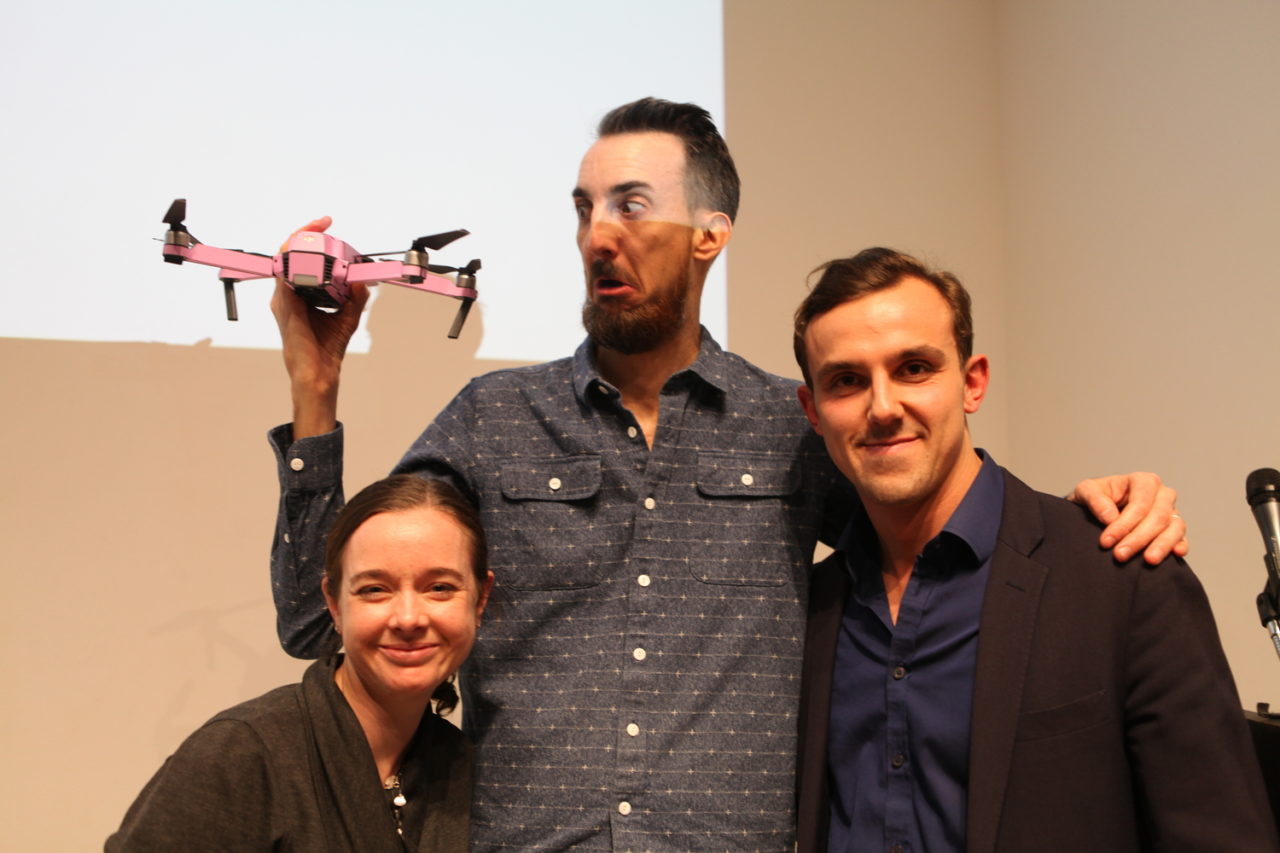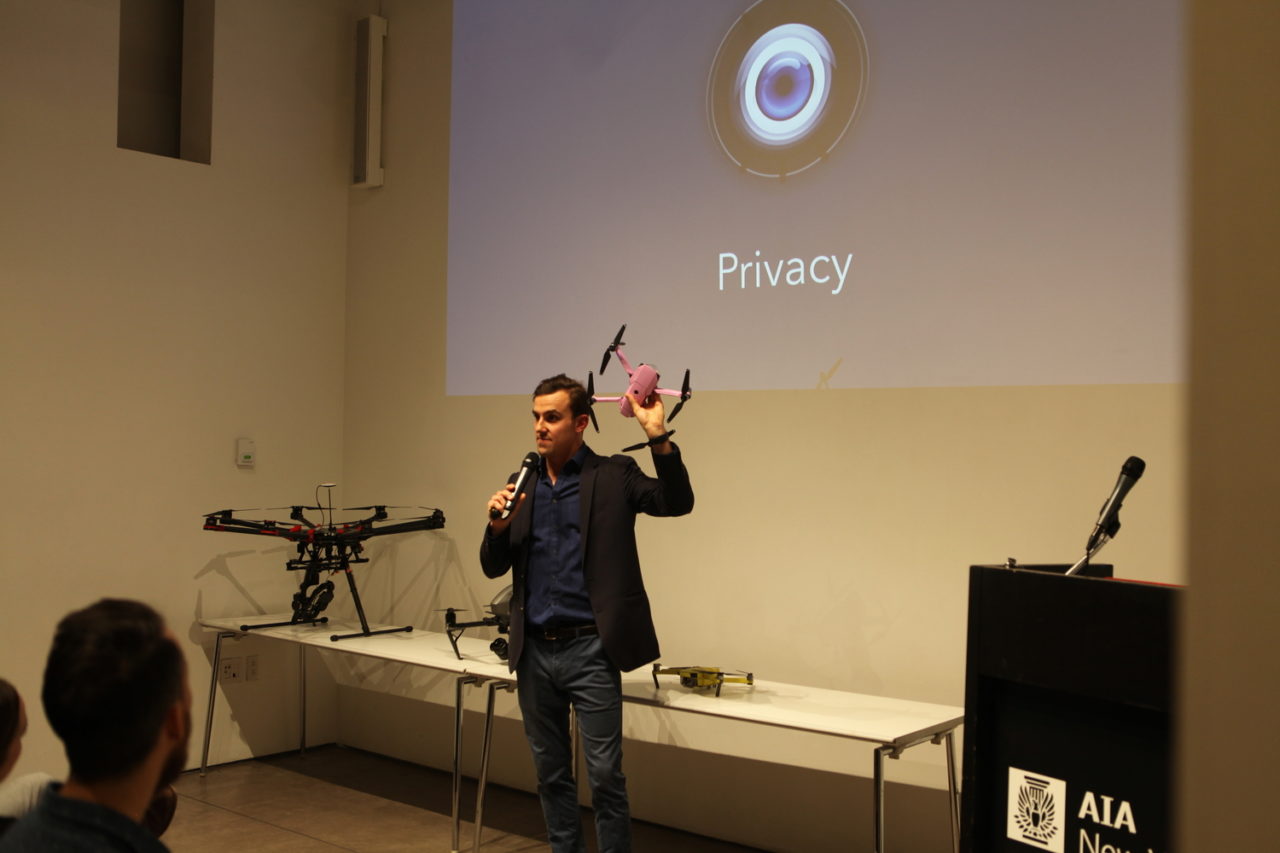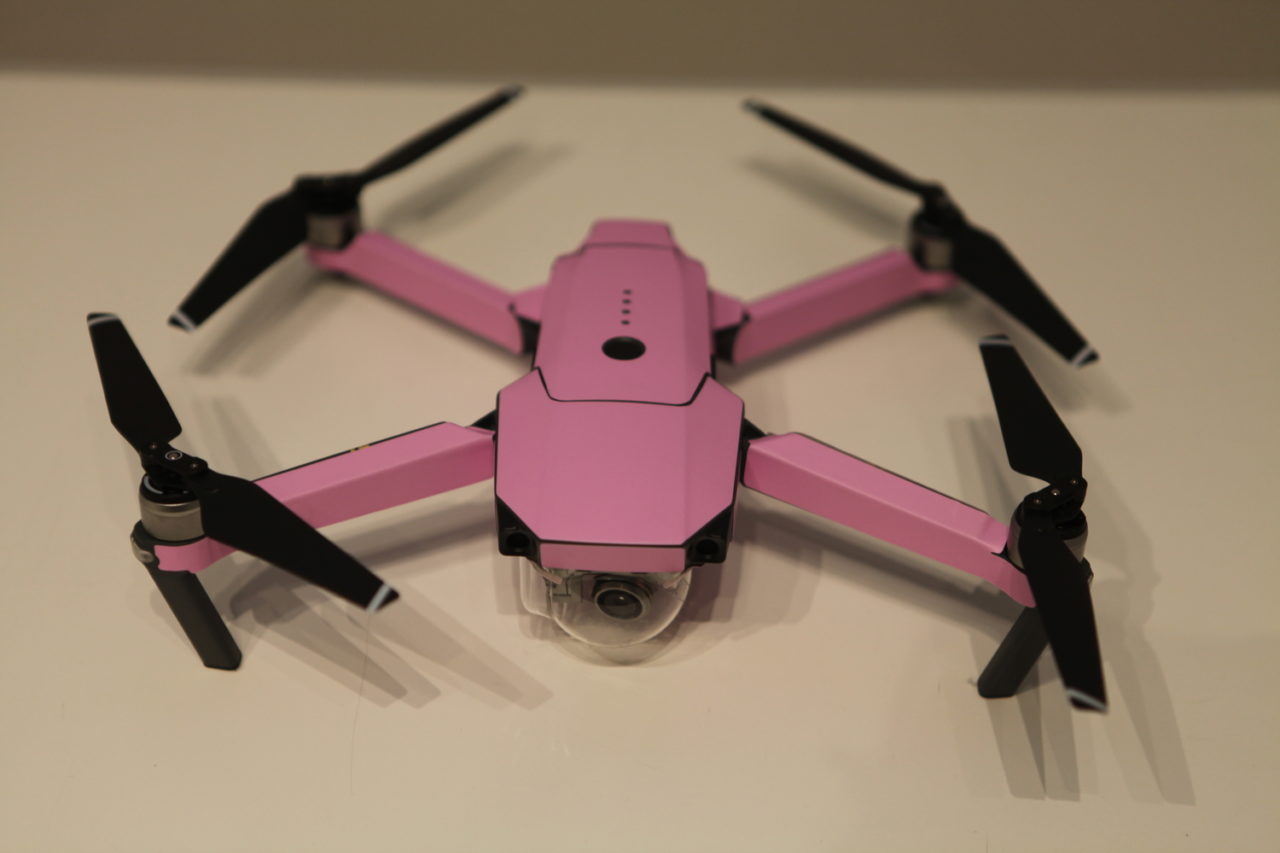by: Michael Brotherton
Pablo Marvel of Nova Concepts delivered an engaging presentation on drones at the Center for Architecture on 12.18.17. Hosted by the AIANY Technology Committee, the talk, “Understanding the Drone: Aerial Innovation and Automated Futures,” focused on the drone as a platform whose potential impact are not only applicable to the AEC industry, but to a wide range of fields including agriculture, humanitarian aid, and transportation.
A brief history attributed the turning point in modern mainstream drones to 2013, when the first consumer drone was outfitted with a Go-Pro camera. From there possibilities snowballed, with the tool being utilized to replant mangrove forests, deliver life-saving organ transplants to rural areas, and apply fertilizer with pinpoint accuracy to crops.
Within the AEC industry, the most common use of drones has been for photography purposes; however, uses are growing. Cameras have been utilized to identify and map out thermally weak points within buildings, as well as to attach Lidar to output 3D models and perform accurate volumetric calculations. Additionally, Nova has developed an online platform for conducting Local Law 11 façade inspections, in which a typical NYC façade inspection can be completed within 45 minutes without the need for scaffolding or rigging.
In addition to all the positives, the inevitable elephant in the room regarding the ethical use of drones was discussed at various points in the lecture. Issues such as personal privacy, loss of jobs to automation, and safety were brought up; the presenter advocated for drones to be thought of as a supplemental tool instead of a human replacement.
The evening was concluded with a discussion about the future applications of drones, touching on personal transport, expanded e-commerce, and the application of swarm technology to physically create buildings. All in all, the future opportunities for drones as a tool will only be limited by human ingenuity and public acceptance.










